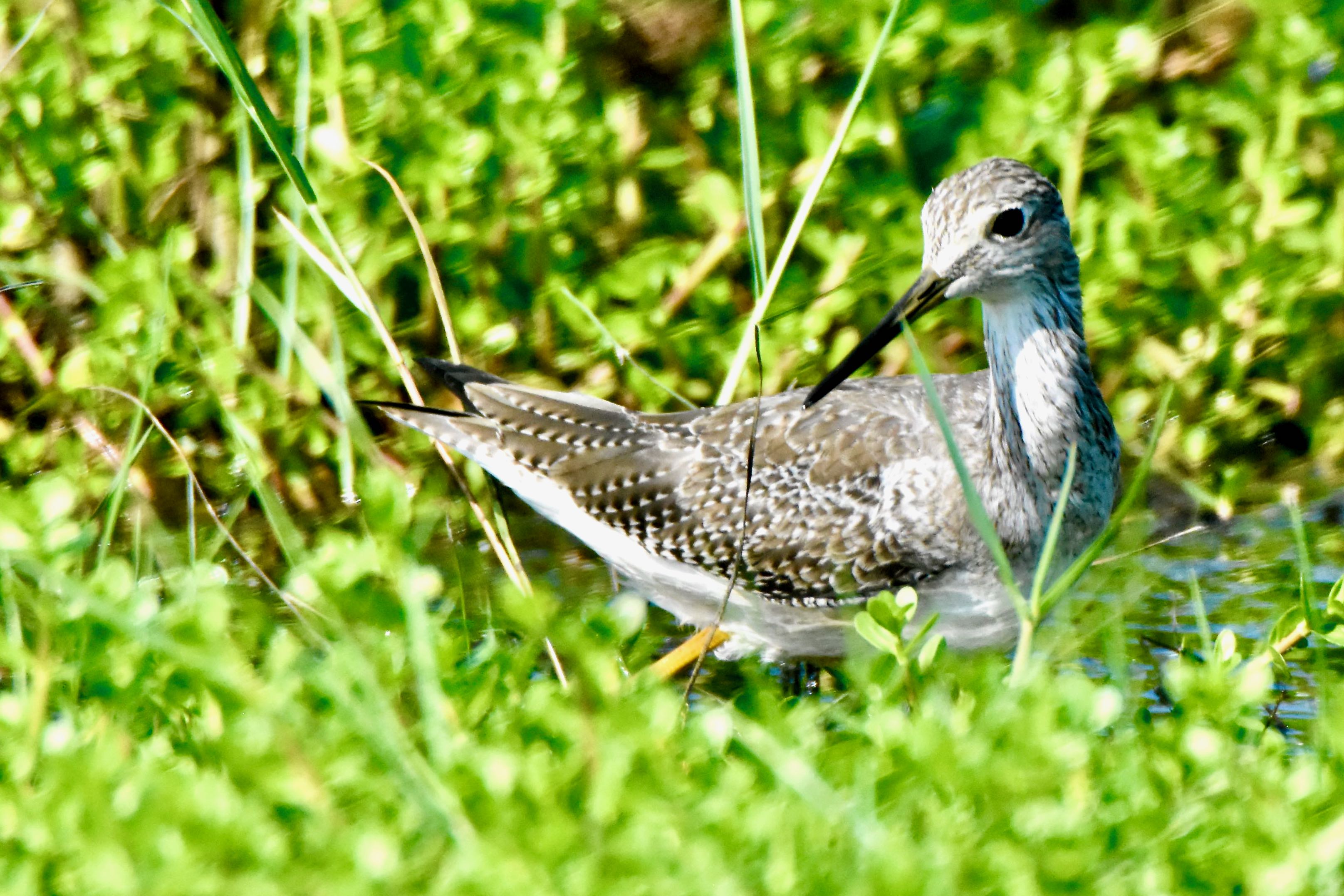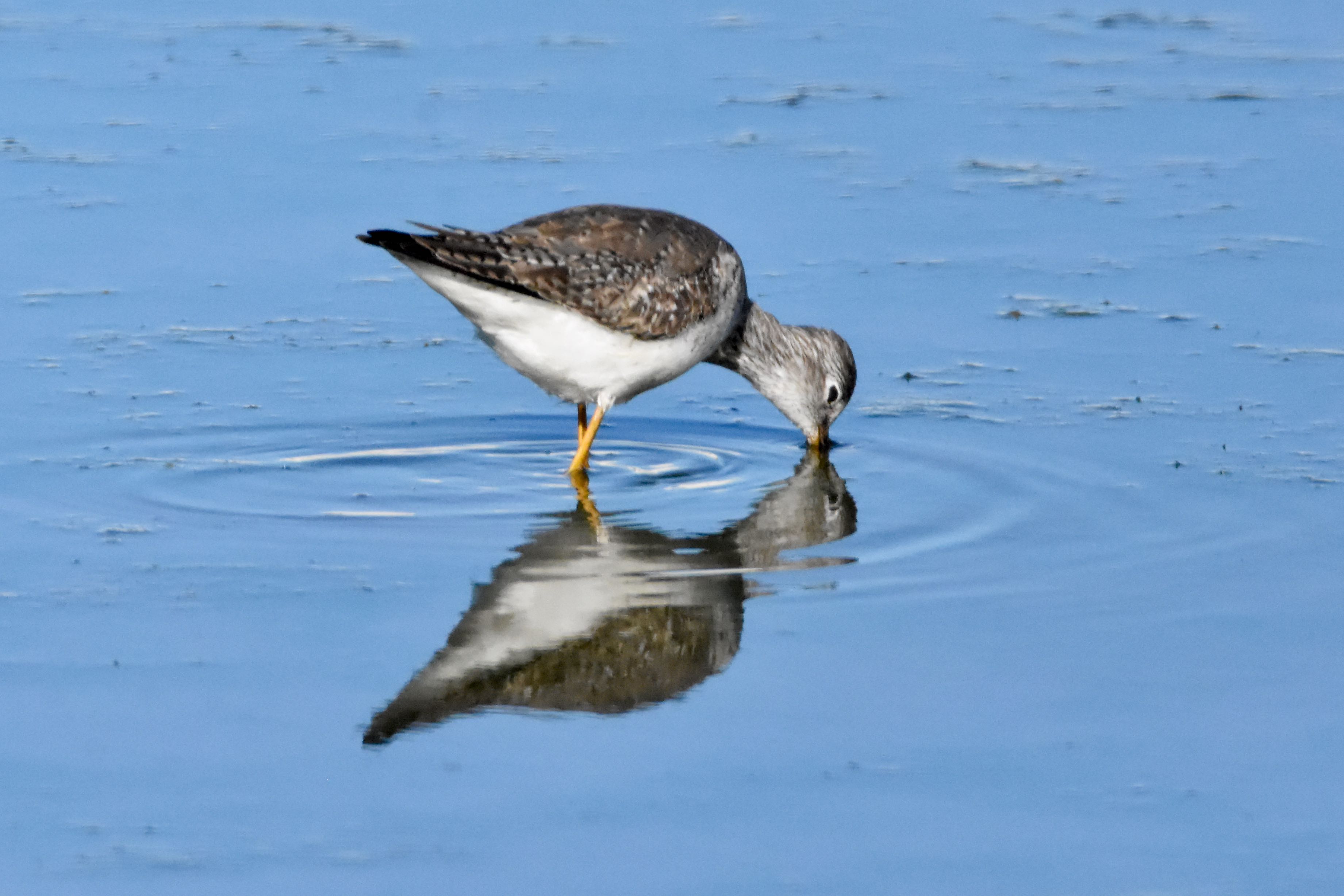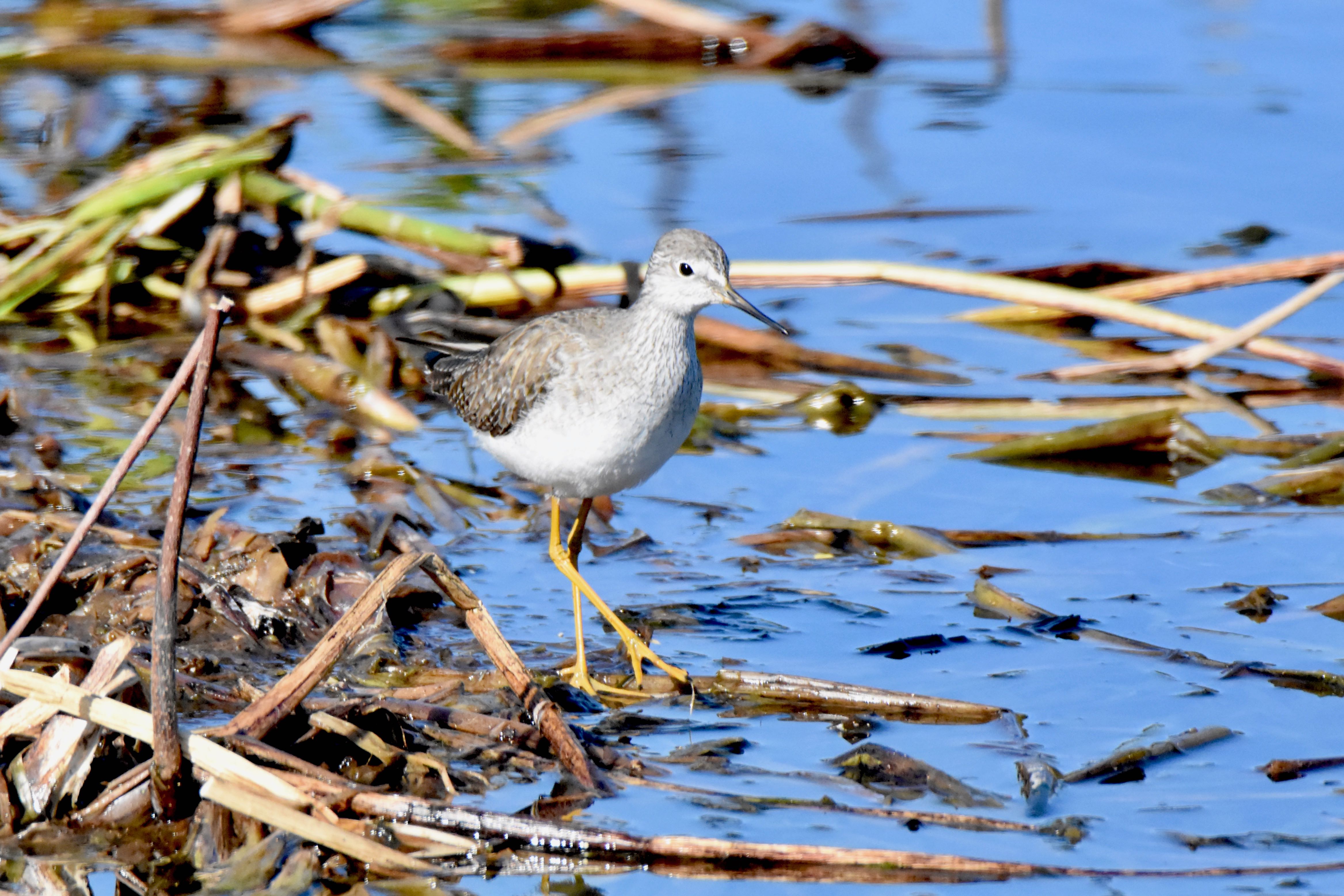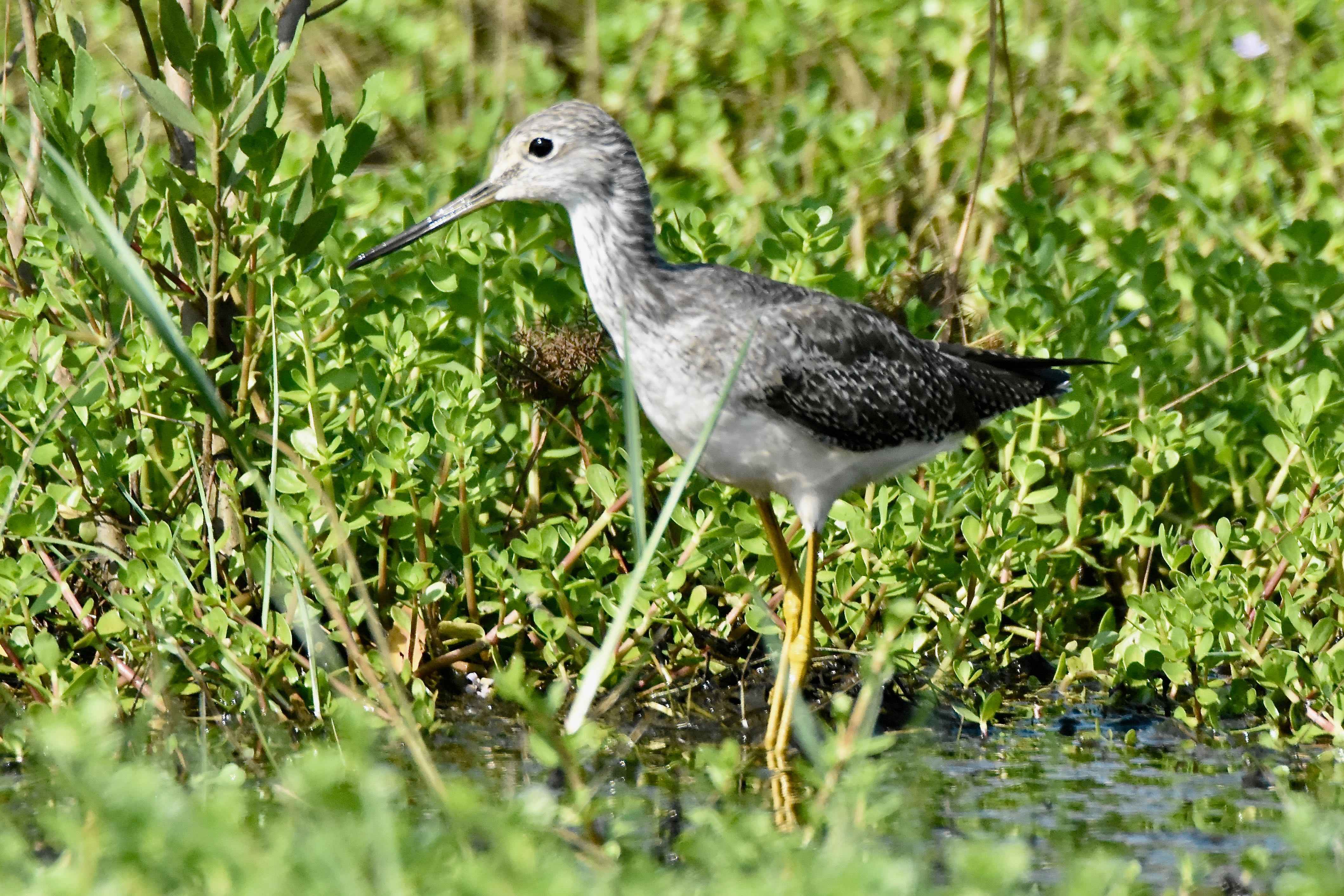
Greater yellowlegs sandpiper, photographed at Aransas National Wildlife Refuge, Aransas, Texas, in October 2019.
It would be handy to have a measuring stick on hand anytime you come across a yellowlegs sandpiper. Just ask it to stand by it and you'll know whether your new found friend is a greater yellowlegs or its cousin, the lesser yellowlegs. Silly, of course, but it would a handy if you could do it.
The surest way of distinguishing the two lookalikes, particularly at a distance, is sheer size. The greater yellowlegs, Tringa melanoleuca, is considerably larger and stockier than the more petite lesser yellowlegs, Tringa flavipes. Both birds are winter visitors to South Florida, and both share similar habitats, so occasionally you do see the two together. Otherwise, their body markings and coloration are almost identical, down to their namesake bright yellow legs. The only other features that distinguish the two birds are slight variations in the bills.
Greater yellowlegs can exceed a foot in body length and have a wingspan of about two feet. Lesser yellowlegs top out at about 10 inches long but have similar wingspans. The bill on the greater yellowlegs can have a slight upward curve, and is rather blunt at the tip. The bill on the lesser is straight and sharp; it's also uniformly dark throughout the year, while the greater's takes on a grayish tone at the base during winter season, while remaining dark toward the tip. And the bill on the greater yellowlegs is much longer in proportion to its head, about 1.5 times the length, while the bill on the lesser yellowlegs is barely longer than its head.
One other way to help separate the two: compare how they size up against their surroundings. The greater yellowlegs will stand taller out of the water and against nearby vegetation, lesser yellowlegs obviously less so. Photographs with a lens long enough to capture details also help.
In summer, greater yellowlegs journey to Canada and southern Alaska where they nest in boggy places called muskegs. In winter, they retreat to the coasts, the Atlantic as far north as Virginia and Maryland south through Florida, along the Gulf into Texas, Mexico, Central America and all of South America. They also take refuge along the Pacific coast, from California southward. During migration, they can be seen almost anywhere in the United States.
Greater yellowlegs are common birds, but they don't tend to congregate in large numbers. That, plus their habit of nesting in some of the most inhospitable places on the continent — those muskegs — makes them among the least-studied of North American shorebirds, according to the Cornell Laboratory of Ornithology.
They spend their winters in places with open water, salt or fresh, like mudflats, marshes, estuaries, along ponds, rivers and lakes and open beaches. Greater yellowlegs forage by sweeping that long bill side to side through the water, feeling for small fish, frogs and aquatic and terrestrial invertebrates, including bugs. Occasionally, they'll dine on seeds and berries.
These sandpipers nest on the ground, scraping out a small hole and lining it with lichen, leaves and sticks. Females lay a clutch of four eggs, give or take; both parents probably share sitting duties, which last about three weeks. The offspring are ready to leave the nest shortly after hatching, and are capable of feeding themselves almost immediately. Both parents tend to their kids until the time they are able to fly, which is about three weeks after hatching.
According to Cornell, it appears that the greater yellowlegs population is increasing, but different organizations present differing census totals. In any case, greater yellowlegs don't seem to be in in danger of extinction.
Greater yellowlegs are members of Scolopacidae, the sandpiper family.



